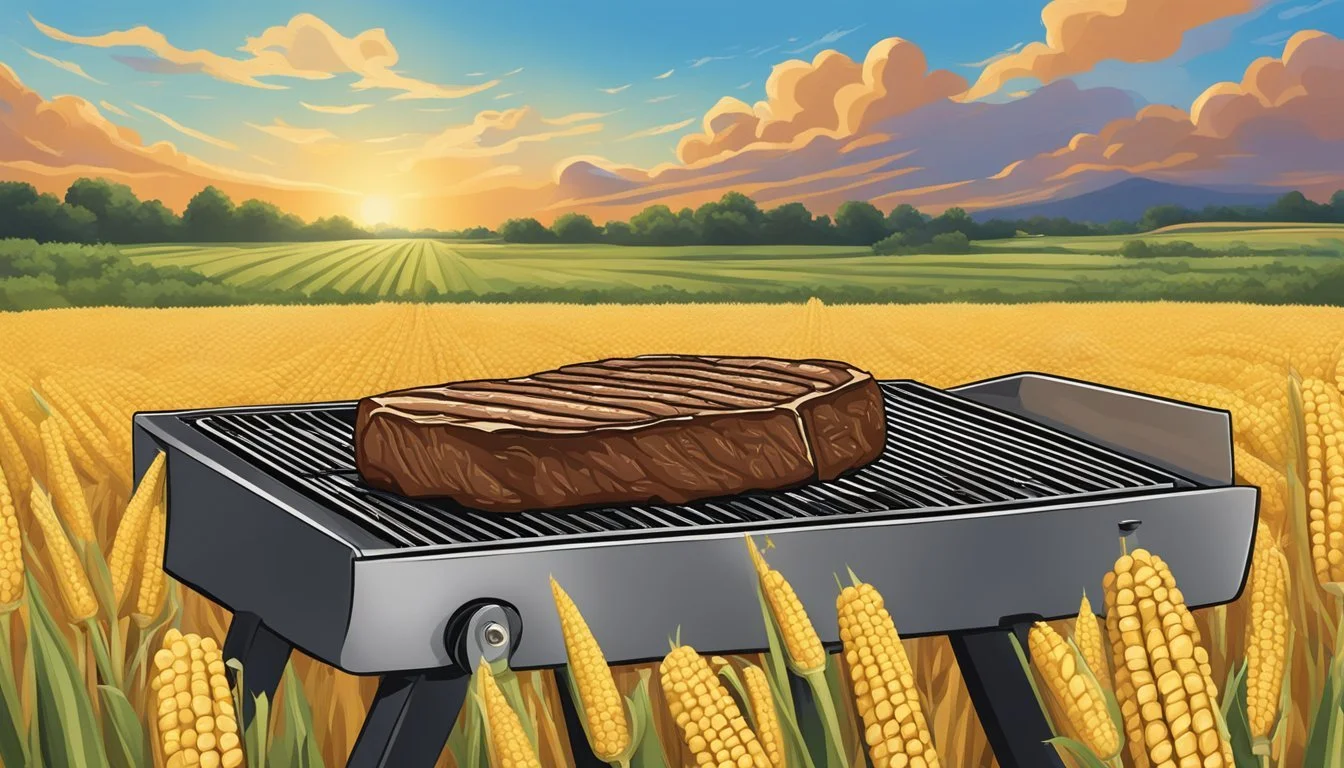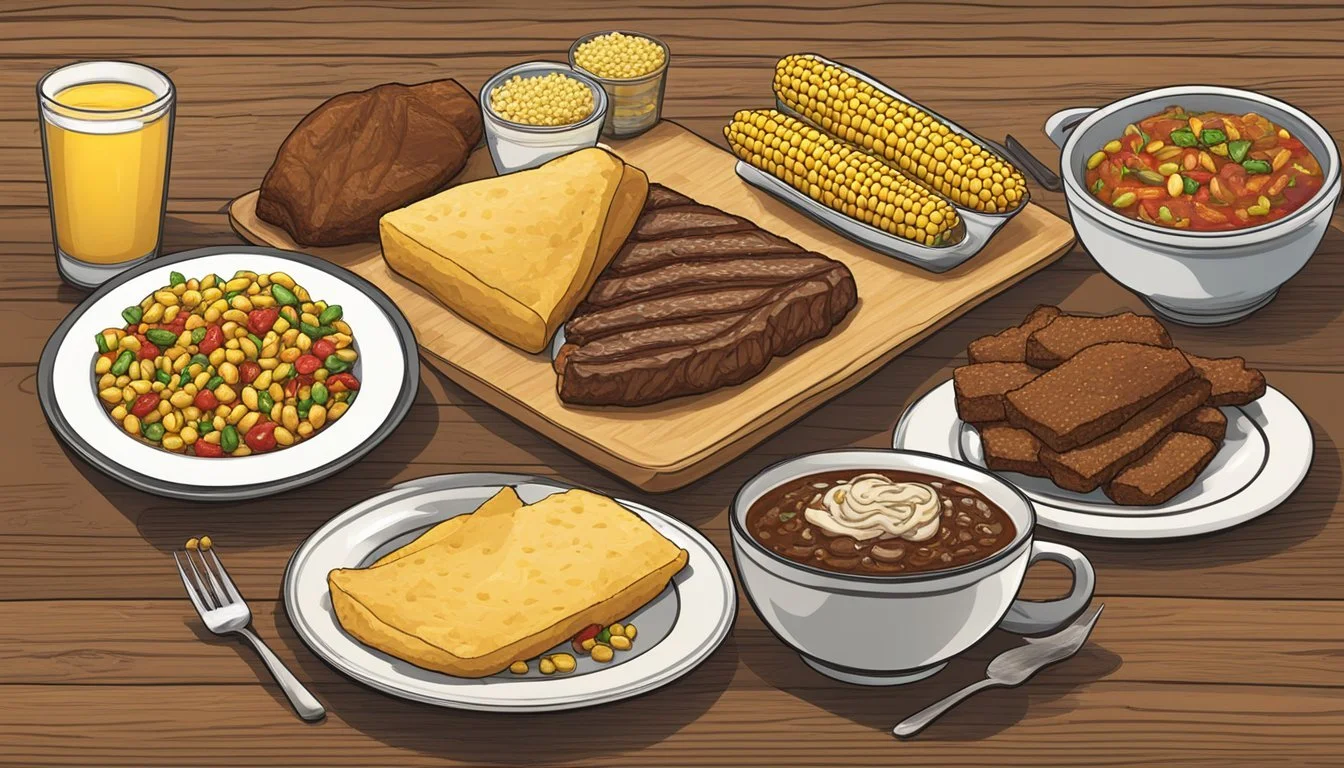What Food is Nebraska Known for?
Exploring Iconic State Dishes
Nebraska, known as the Cornhusker State, has a rich agricultural heritage that profoundly influences its culinary scene. The state's food is marked by hearty, comforting dishes reflecting its history and the agricultural abundance of the area. Corn, of course, is a cornerstone of Nebraska's cuisine, often celebrated in the form of sweet corn on the cob, an indispensable side dish at many Nebraskan gatherings.
The state is also renowned for its quality beef, thanks to the sprawling ranches that dot its landscape. Beef-centric dishes are a staple, with steaks and hamburgers consistently ranking as popular meal choices. However, the culinary diversity extends beyond these favorites, embracing unique local creations such as the Runza Sandwich, a baked pastry with German-Russian origins filled with seasoned meat and vegetables.
From pork tenderloin (What wine goes well with pork tenderloin?) sandwiches (What wine goes well with sandwiches?)—a favorite among local hole-in-the-wall establishments—to creatively prepared Rocky Mountain oysters (What wine goes well with oysters?), Nebraska's food offerings showcase a spectrum ranging from the familiar to the adventurous. Fish fries and hamburger pizzas further attest to the local palate's eclectic tastes, ensuring that Nebraska's food culture holds surprises and comfort in equal measure. This blend of tradition and diversity paints a comprehensive picture of what food in Nebraska stands for: a reflection of its people, their history, and the bountiful land that sustains them.
Famous Nebraska Dishes
Nebraska's culinary scene is defined by its heartwarming comfort foods and rich agricultural history. This section explores four of Nebraska's most recognized dishes, each with its own heritage and local favor.
Runza Sandwich
The Runza Sandwich, a Nebraskan staple, boasts a tempting mixture of ground beef, cabbage, and onions, all enveloped in a warm, homemade bread pocket. This iconic dish reflects the state's German-Russian influences and satisfies with its hearty and distinct flavors.
Reuben Sandwich
Contrary to popular belief, the Reuben Sandwich's origin story points to Omaha's Blackstone Hotel where it was reportedly first conceived. This deli classic layers corned beef, Sauerkraut (how long does sauerkraut last?), and melted Swiss cheese between slices of toasted rye bread, creating a savory experience that has become synonymous with Nebraska's rich dining offerings.
Butter Brickle Ice Cream
A dessert uniquely tied to Nebraska's food history is Butter Brickle Ice Cream. It features toffee-flavored ice cream studded with small, crunchy pieces of butter toffee, originally made famous by Omaha's Blackstone Hotel. Its creamy texture and buttery crunch have charmed Nebraskans for generations.
Steak
Nebraska's reputation for quality beef shines in its preparation of steak. Known for producing some of the best Omaha Steaks in the country, including choice cuts like Ribeye, the state prides itself on grilling steaks to perfection, embodying the rich flavors that have long defined Nebraska's food culture.
Unique Nebraska Food Creations
Nebraska's culinary landscape is distinguished by its inventive takes on traditional fare, shaped largely by local ingredients and time-honored recipes. From sweet indulgences to classic comfort foods, the state's unique delicacies offer a taste of Midwestern heritage.
Tin Roof Sundae
Originating from Potter, Nebraska, the Tin Roof Sundae is a dessert named for its signature toppings: a generous drizzle of chocolate sauce and a sprinkling of peanuts. It takes classic vanilla ice cream and elevates it into a local specialty that has captured the hearts of both residents and visitors.
Dorothy Lynch Salad Dressing
Another Nebraska original is the Dorothy Lynch Salad Dressing, an essential condiment in many Nebraskan kitchens. Its unique taste—a blend of sweet and tangy with a hint of tomatoes—and vibrant color make it a versatile dressing loved for its ability to complement a wide range of salads and dishes.
Cornhusker State Delicacies
Nebraska's nickname, the Cornhusker State, is a nod to one of its primary crops: corn. This staple grain features prominently in the local cuisine, providing a sweet, fresh taste that's particularly delectable when harvested at the peak of ripeness. This ingredient is central to many of the state's beloved dishes, reflecting Nebraska's agricultural heritage and Midwestern roots. Moreover, Omaha, a bustling hub in Nebraska, is home to an array of dining establishments that highlight these regional flavors with a modern twist.
Nebraska Food History
Nebraska has a rich culinary heritage, with inventions like Kool-Aid and a strong agricultural tradition shaping its foodways. The state's history of immigration also contributes diverse influences to its gastronomy.
Kool-Aid Origins
In the 1920s, Edwin Perkins innovated in the beverage industry by creating Kool-Aid, a flavored soft drink mix. He transformed his liquid concentrate, Fruit Smack, into a powder to reduce shipping costs, resulting in the birth of a household name. Hastings, Nebraska, celebrates this invention with the annual Kool-Aid Days festival, honoring the state's contribution to the soft drink industry.
Cultural Influences
Nebraska's culinary scene has been shaped by its immigrants; Czech immigrants introduced kolaches, a type of pastry filled with fruits or cheeses. Another European-influenced food, the Bierock (a savory pastry filled with beef, cabbage, and onions), is also a Nebraska specialty, reflecting the state's penchant for incorporating diverse cultural foods into their traditions.
Agricultural Impact
Agriculture plays a pivotal role in Nebraska, known as the Cornhusker State for good reason. Corn is a staple crop and a common sight on Nebraska plates, often served on the cob or used in various dishes. The state's abundant cattle industry provides a wealth of beef, making it integral to local food traditions. Nebraska utilizes its raw materials effectively, laying the foundation for iconic dishes like beef-filled sandwiches and other meat-centric foods.
Contemporary Food Scene
The food scene in Nebraska is a vibrant blend of tradition and innovation. With a rich agricultural heritage, the state proudly showcases its quality produce through a variety of dining establishments and culinary events.
Local Restaurants and Eateries
At the heart of Nebraska's food scene are the local restaurants and eateries. These establishments range from cozy diners in small towns to gourmet steakhouses in Omaha. Deli shops provide hearty, homestyle sandwiches, while micro-smokehouses and BBQ joints, manned by skilled pitmasters, offer succulent BBQ ribs that are a testament to the state's love for smoked meats.
Steakhouses: Renowned for their premium beef, Nebraska's steakhouses serve up some of the finest cuts.
Diners: These provide a window into the state’s soul food, offering comfort dishes in a friendly atmosphere.
Micro-Smokehouses: They are emerging as hidden gems, with pitmasters experimenting with local woods and meats.
Modern Nebraska Cuisine
Chefs across Nebraska are redefining the state’s cuisine by incorporating contemporary techniques with Nebraska’s traditional ingredients. Gourmet dishes that include fresh, locally-sourced produce reflect a modern take on the state’s agricultural roots. Omaha, in particular, stands out as a city where innovative chefs are crafting modern Nebraska cuisine that respects the past yet looks to the future.
Gourmet Food: Crafted with local ingredients, it ranges from artisanal cheeses to inventive meat dishes.
Chefs: They often emphasize sustainability and ethical farming practices, adding to the quality of the dining experience.
Food Festivals and Events
Nebraska's calendar is dotted with food festivals and events that celebrate the state's culinary offerings. Kool-Aid Days in Hastings honor the state’s official soft drink with festivities for all ages. Food celebrations throughout the state not only showcase Nebraska's popular food but also bring communities together to savor and appreciate the rich tapestry of flavors that Nebraska has to offer.
Kool-Aid Days: A festival filled with family-friendly activities and plenty of the iconic beverage.
Celebrations: These events often feature local chefs, pitmasters, and producers, providing a taste of the community's best offerings.
Regional Specialties and Variations
Nebraska's culinary landscape reflects its geographical and cultural diversity, exhibiting a range of regional specialties influenced by its agrarian roots and the traditions of its inhabitants. While some dishes have broad appeal across the state, others are distinctly regional or have variations that locals swear by.
Western Nebraska
In Western Nebraska, the cuisine embodies the rugged spirit of the old west, where dishes like Rocky Mountain Oysters—also known as Cowboy Caviar—are a testament to cowboy culture. These deep-fried cattle testicles are a delicacy often found at local festivals and steakhouses. Additionally, the area's fare often includes hearty beef-based meals, a nod to the region's strong cattle ranching heritage.
Eastern Nebraska
Eastern Nebraska, particularly Omaha, adds a cosmopolitan flair to the state's gastronomy. The iconic Reuben Sandwich, with its origins claimed by Omaha, combines corned beef, sauerkraut, Swiss cheese, and Russian dressing between slices of rye bread, reflecting the area's diverse cultural influences. Cheese Frenchees, another local favorite, are unique deep-fried cheese sandwiches, an indulgent comfort food beloved in the region.
Local Comfort Foods
Across the state, comfort foods reign supreme. Regional variations of classics such as the Grilled Cheese Sandwich showcase different local cheeses and bread. Pies play an integral role in gatherings, with Raisin Pie, also known as Funeral Pie, being a staple dessert at communal events. Comfort extends into local fast food as well, with the Runza Sandwich, a doughy bread pocket filled with beef, cabbage, and onions, originating from and widely enjoyed across Nebraska.
Food Preparation and Ingredients
Food preparations in Nebraska are deeply rooted in the state's rich agricultural offerings, which contributes to the characteristic flavors of its cuisine. The cooking methods often highlight the freshness and quality of locally sourced ingredients, while spices and flavors lean towards the savory and comforting side, befitting the state's culinary traditions.
Nebraska's Agricultural Products
The state of Nebraska is a bountiful source of various agricultural products. Corn, renowned as a symbol of the state, is prevalent in many dishes, offering sweet and starchy notes. Beef is another cornerstone, with the state's cattle farms providing high-quality meat for steaks and the iconic Runza sandwich. Pork is a staple as well, while soybeans (how long do soybeans last?) appear in various preparations, from processed forms to fresh additions in dishes.
Main Products Use in Cuisine Corn Sides, ingredients in dishes Beef Grilled steaks, Runza filling Pork BBQ, various pork dishes Soybeans Oil, fresh in salads
Cooking Techniques
Nebraska's food scene is known for embracing simple yet effective cooking techniques that enhance the natural flavors of the food. Grilling is a favorite for preparing steaks, imbuing them with a smoky essence. The BBQ tradition is strong as well, particularly with pork, slathered in flavorful sauces. Deep-frying is another common practice, with dishes like deep-fried grilled cheese sandwiches, offering a crisp exterior to a gooey, cheesy center.
Grilled: Utilized primarily for beef, imparting a savory char
BBQ: Often for pork, seasoned with rich, flavorful sauces
Deep-Fried: To create a crunchy texture in various dishes
Spices and Flavors
In Nebraska cuisine, the flavors tend to be full-bodied and savory. Spices used are often not overly complex; instead, they complement the primary ingredients, letting the quality of the produce shine. Dishes lean towards the flavorful, with a focus on the inherent tastes of the meats and vegetables, subtly enhanced with spices such as garlic, pepper, and salt, and occasionally sweetened with corn or BBQ sauces.
Savory: Garlic, onion, pepper, and herbs dominate
Sweet: Corn and sweet BBQ sauces add balance
Spices: Used to enhance, not overpower the main ingredients






